When adopting a pet, you must ensure that its living conditions and diet are perfect for its well-being. This is even truer for baby animals as they need special care to ensure their proper growth. Baby Pacman frogs are no exception to this either, as they also need to be given a proper diet. But what exactly do baby Pacman frogs eat?
Well, baby Pacman frogs eat almost everything that an adult Pacman frog eats, except for a couple of things. Their diet includes various insects, mealworms, wax worms, etc. You also have to provide them with proper supplements to help them grow and become stronger. But refrain from feeding them mice until they are fully grown.
Let’s take a detailed look at the diet as well as the feeding process of baby Pacman frogs.
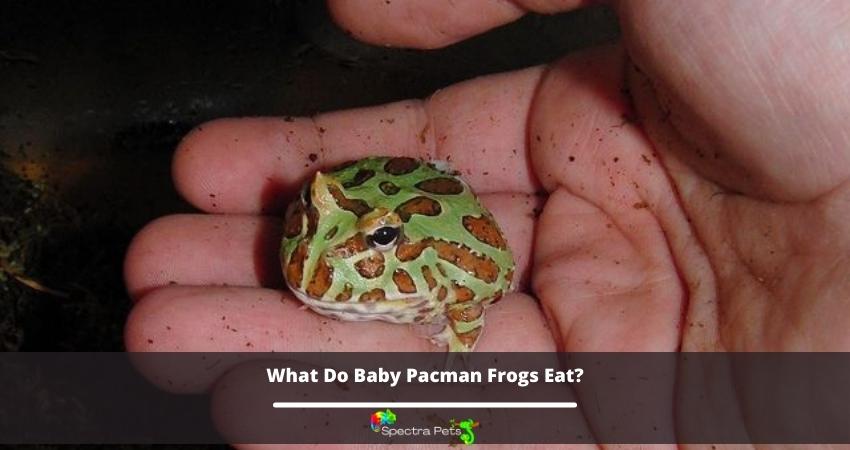
Diet of baby Pacman Frogs
There isn’t very much difference in the diets of baby and adult Pacman frogs. The only difference between their diets is the amount of food and the foods the babies can’t eat. Let’s take a look at what you can feed the baby frogs:
1. Regular food
Pacman frogs are insectivorous. So they eat any kind of insect that they can clench their jaws around. Baby frogs aren’t any exception to this either. You can feed them various insects and worms.
The diet of baby Pacman frogs mainly consists of insects, wax worms, mealworms, etc. These are extremely rich in nutrients that help babies to grow quickly and lead healthy life. But you have to keep a couple of things in mind when feeding your frogs.
First, ensure the size of the insects isn’t bigger than your baby Pacman frog. If the insects or worms are larger than the frogs, they will sometimes get attacked. Even if they aren’t attacked by the insects, they will starve since they won’t be able to hunt animals larger than them. This will be counterproductive.
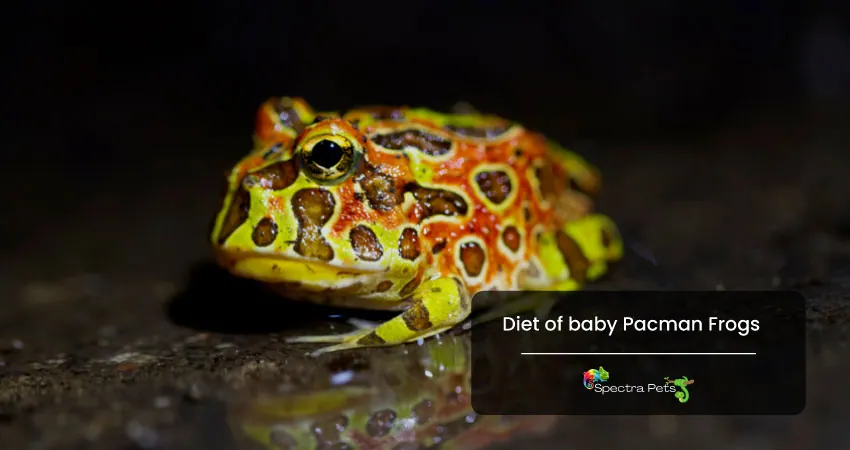
Second, hold off on feeding your baby Pacman frogs mice. Pacman frogs indeed eat mice, but it’s not the best for babies. Mice are almost always bigger than baby frogs which are only as large as a quarter. If you try to feed mice to the frogs, the mice will perceive them as prey and try to eat them instead. Also, the jaws of the babies aren’t strong enough to hold on to a struggling mouse even if it is smaller than the frog.
Related Article: Can Pacman Frogs Eat Dubia Roaches?
2. Supplements
If you want your baby frogs to grow properly and to be strong, only regular food won’t be enough. You have to provide some necessary supplements as well. These supplements are needed to make the skeleton of the frogs stronger.
As the frogs are kept in tanks, they usually don’t get enough sunlight. As a result, their skin can’t produce enough vitamin D. vitamin D helps the frogs to absorb adequate calcium. In the absence of the vitamin, your Pacman frogs can’t absorb calcium and their bones become weak, which makes them unable to latch onto prey.
Since babies are much more fragile, they face this problem even more. To avoid such things from happening, you have to provide them with proper supplements. You need to dust whatever food you are feeding them with calcium and vitamin D supplements before putting them in the tank. This will prevent the babies from suffering from metabolic bone disease.
Here are some Dietary supplements for a pacman frog to give you a headstart.
How many times should you feed your baby Pacman frogs a day?
Pacman frogs have a large appetite. They can eat a lot in one sitting. The babies of the species are the same. An adult Pacman frog doesn’t need to be fed daily, but that’s not the case when babies are concerned.
Baby Pacman frogs need more nutrition than adults due to their fast-growing bodies. As a result, they burn energy faster than adults. So, they need to be fed more frequently than adult frogs. You need to feed a baby Pacman frog each day, sometimes you can feed them once in a couple of days as well.
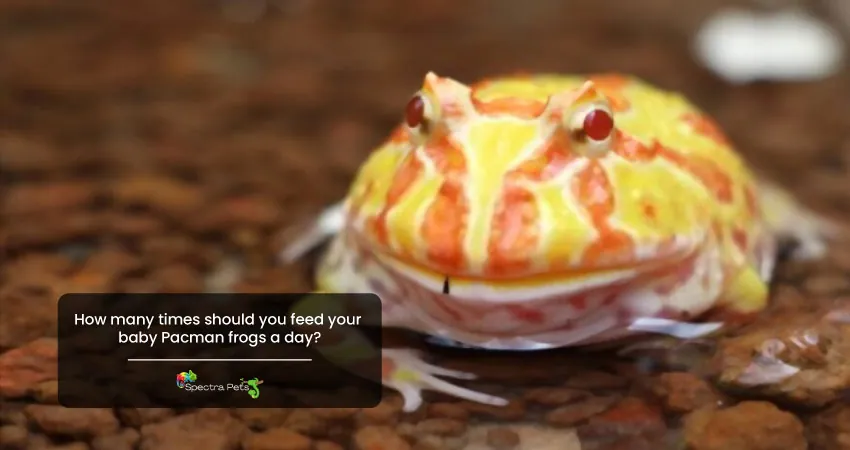
What amount of food should be given to baby Pacman frogs?
People often find themselves at a loss about how much should they feed their baby frogs. The best way to know this is to notice how much the frog eats until it’s full. Like most animals, baby Pacman frogs also don’t continue eating once they are full. It takes them about a quarter of an hour to do so.
So, see how much they eat in fifteen minutes. Once they are full, remove the remaining food from the tank. Keep feeding them the same amount from that point onward.
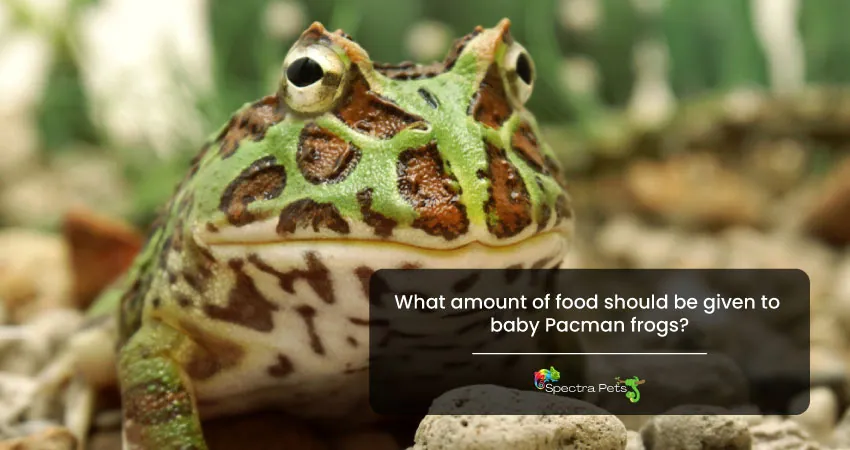
When should the Baby Pacman frogs be fed?
A lot of times people complain that despite them putting food in the tank in the right amount, their baby Pacman frogs aren’t eating. This is because they have the feeding time wrong. You need to feed the frogs at the right time for them to eat properly. But when is that?
Pacman frogs are nocturnal. That means they are most active at night. They hunt during that time also. So, you have to feed your Pacman frog, baby, or not, during the night to ensure proper feeding.
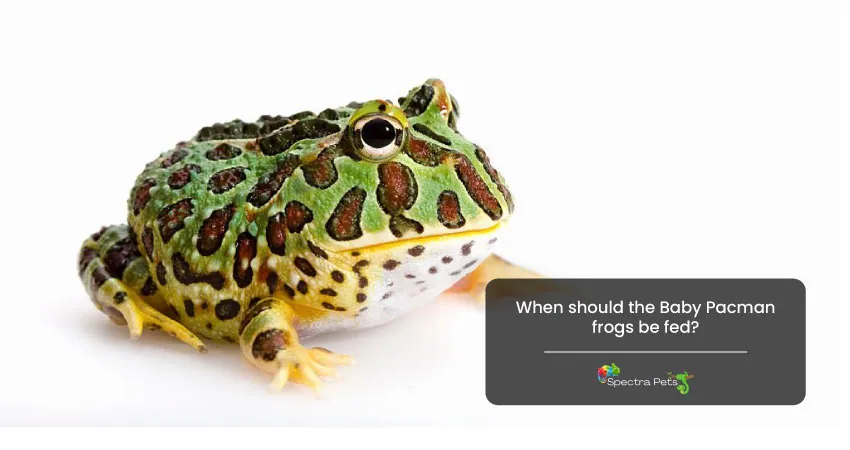
Why doesn’t a baby Pacman frog eat?
Sometimes, even after you have done everything correctly, you see your baby Pacman frog isn’t eating. Normally, you would be panicking, because you feel like something is wrong but you can’t understand what. There are two reasons that a baby Pacman frog doesn’t eat.
First, sometimes baby frogs refuse to eat when they are newly introduced to an enclosure. Because they need a little bit of time to settle down. Once they are acclimated to their surroundings, they will start eating normally.
Second, the conditions of the tank play a big role in the feeding habits of the baby frogs. If the humidity and the temperature of the tank aren’t comfortable for the babies, they will stop eating. So, it’s a must that you maintain the optimal temperature as well as humidity in the tank.
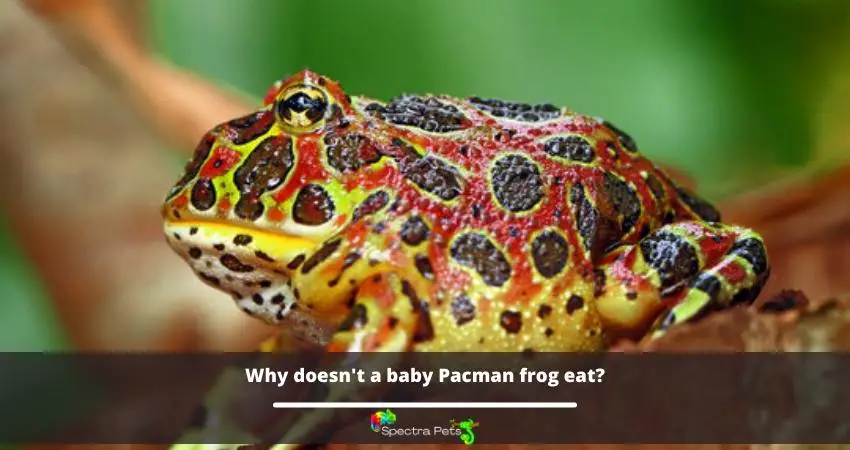
How to encourage the baby Pacman frogs to eat?
Sometimes leaving things up to instincts doesn’t bring about the best results. So, you have to do things that will encourage baby frogs to eat more regularly. These are:
1. Allowing it to settle in
As mentioned earlier, baby frogs don’t eat much when they are moved to a new tank. So it’s best to give them some time to get acquainted with their surroundings.
Usually, it takes them a week to be completely settled in their new environment. After that, they will eat regularly. If you ensure proper temperature, ideal humidity, and suitable substrate, these little guys will settle in much faster.
2. Allowing it to hunt naturally
Pacman frogs are natural hunters, so you should allow their predatory instincts to take over. The wild frogs make a burrow on the soil to wait until the prey comes close to them. The frogs kept in the tanks do the same. If you make sure they can naturally hunt their food, you won’t have to worry about them not eating properly.
3. Feeding them using tongs
Sometimes baby frogs don’t want to hunt their prey down, especially early in their lives. In that case, you can use tongs to feed them. But this process doesn’t always work as some babies won’t take food from a tong.
4. Feeding them in another tank
Some baby frogs don’t feel comfortable in their tanks for the first week or so. During that time, they tend to eat less. What you can do is put them in another tank without substrates and feed them there.
Also, little frogs may experience impaction from substrates. This impaction can be fatal to them. So, feeding the frogs in a separate container that doesn’t have any substrates will help them a great deal.
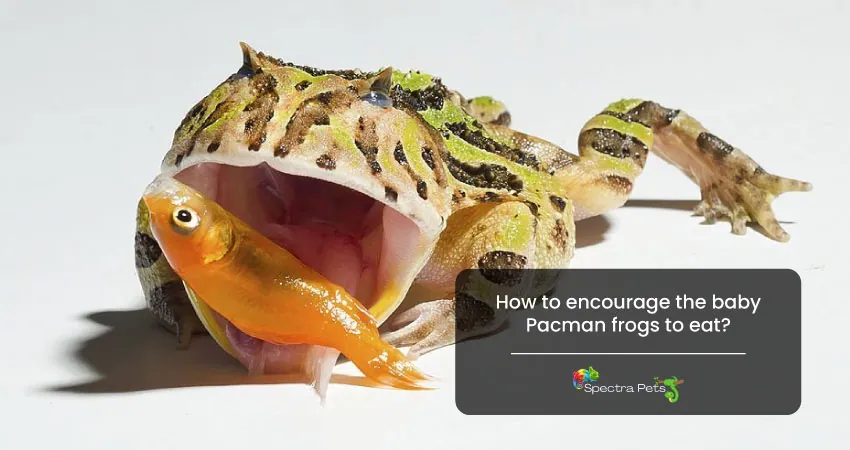
Final Words
Having pets is a great challenge for everyone. Keeping baby animals as pets is an even greater challenge, especially due to their diets. Baby Pacman frogs fall into the same category.
So if you have one, you must take into account what baby Pacman frogs eat, when to feed them, and what you should do to ensure they feed properly, as all of these will help the baby live a long life.
Related Articles:
- How Long Can A Pacman Frog Live Without Eating
- How To Identify The Gender Of A Pacman Frog
- Can You Keep Pacman Frogs Together?
- Would it be wise to hold a Pacman Frog?
- Average Cost of A Pacman Frog
- What Does Pacman Frogs’ Estivation or Hibernation Mean?
- UVB Light Requirements Of A Pacman Frog
- Can Pacman Frogs Swim
